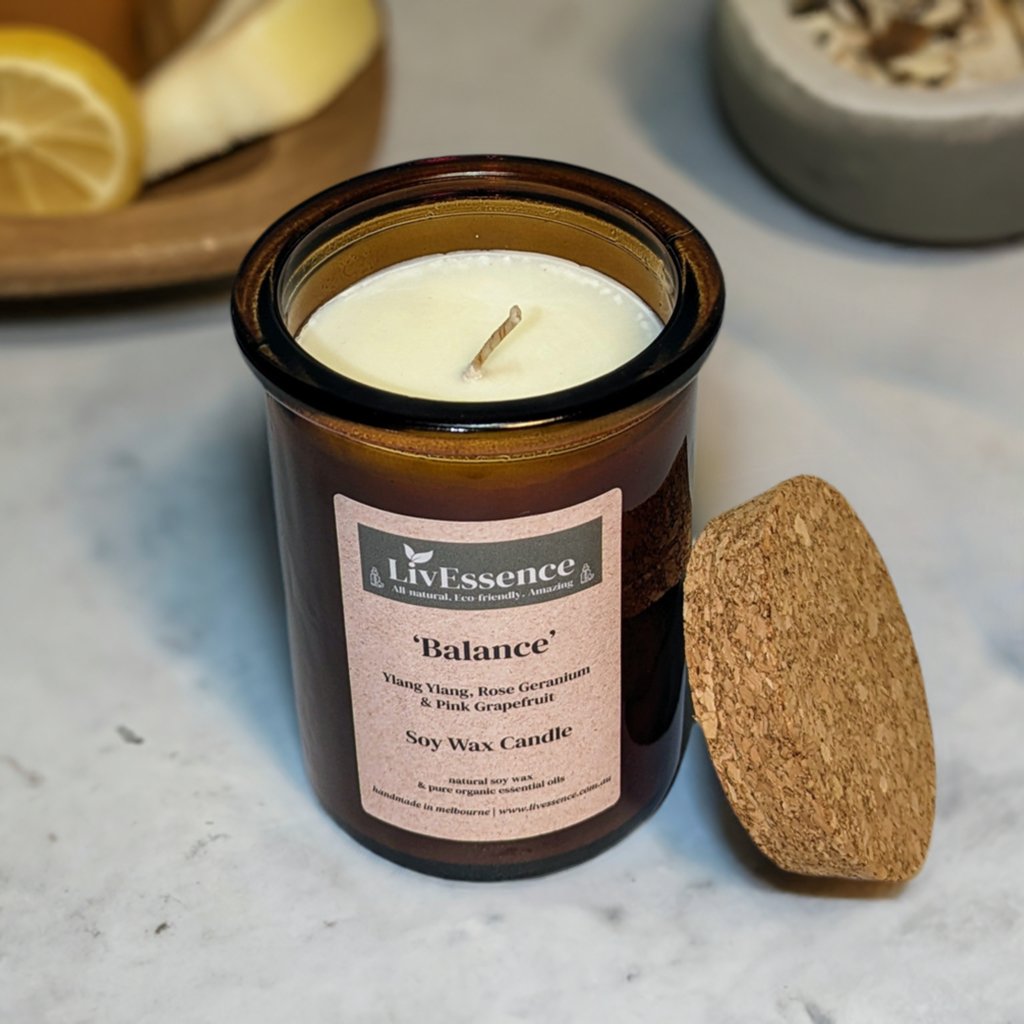Enhance Your Living Space with Glamorous Soy Candles and Home Fragrance
Enhance Your Living Space with Glamorous Soy Candles and Home Fragrance
Blog Article
From Wick to Wax: Comprehending the Chemistry Behind Soy Wax Candles and Their Ecological Influence
As we brighten our spaces with the warm radiance of candle lights, there exists a realm of complex chemistry behind the relatively straightforward act of lighting a soy wax candle. The selection in between soy and paraffin wax prolongs beyond simple visual appeals, diving into the realm of environmental influence and the very composition of the materials. Comprehending the molecular framework of soy wax and its burning process drops light on the exhausts released right into our surroundings. Join us as we untangle the scientific details behind soy wax candle lights and explore their ramifications on our environment.
Soy Wax Vs. Paraffin Wax
When comparing soy wax and paraffin wax for candle light production, it is necessary to comprehend the distinctive features and advantages of each product. Soy wax is an all-natural, renewable energy derived from soybean oil, making it environment-friendly and naturally degradable - home fragrance. In comparison, paraffin wax is a byproduct of petroleum refining, which raises worries concerning its ecological effect and sustainability
Soy wax candle lights burn cleaner and produce less soot compared to paraffin wax candle lights, making them a much healthier selection for indoor air top quality. Additionally, soy wax has a reduced melting factor, permitting for a longer-lasting candle light that disperses fragrance better. Paraffin wax, on the other hand, has a tendency to melt faster and less easily, potentially launching hazardous chemicals right into the air.
From a sustainability perspective, soy wax is favored for its biodegradability and renewable sourcing, lining up with the expanding customer choice for environmentally mindful products. While paraffin wax has been a traditional option in candle light making because of its cost and simplicity of use, the change towards green alternatives like soy wax is obtaining energy in the market.
Chemical Composition of Soy Wax

Combustion Process in Soy Candles
The chemical composition of soy wax directly influences the combustion procedure in soy candles, impacting variables such as additional resources shed time, aroma release, and environmental impact. When a soy candle is lit, the warm from the fire thaws the wax near the wick. This fluid wax is then created the wick because of capillary activity. As the liquid wax reaches the flame, it goes through and vaporizes combustion. The combustion process includes the vaporized hydrocarbons in the wax responding with oxygen airborne to create warm, light, water vapor, and carbon dioxide.
The burning effectiveness of soy candle lights is influenced by the purity of the soy wax and the top quality of the wick. Additionally, soy wax candle helpful site lights have a lower environmental influence compared to paraffin candle lights due to their renewable and naturally degradable nature.

Ecological Advantages of Soy Wax

Taken into consideration a lasting alternative to standard paraffin wax, soy wax uses significant ecological advantages that make it a prominent option among eco-conscious consumers. One significant benefit of soy wax is its renewable sourcing. Soy wax is originated from soybean oil, which is predominantly grown in the USA. The farming of soybeans assists sustain neighborhood farmers and lowers the dependence on non-renewable fossil gas made use of in paraffin wax manufacturing. Furthermore, soy wax is naturally degradable, indicating it breaks down normally without launching unsafe contaminants into the environment. This particular makes soy wax candle lights a much more ecologically friendly alternative contrasted to paraffin wax candles, which are made from petroleum, a non-renewable source. Soy wax burns cleaner and produces less residue than paraffin wax, adding to much better indoor air quality and lowering the demand for cleansing and maintenance. Overall, the ecological benefits of soy wax line up with the growing need for eco-friendly and lasting products in the market.
Recycling and Disposal Considerations
Recycling and correct disposal of soy wax candle lights play an essential function in preserving environmental sustainability and reducing waste in neighborhoods and households. When it comes to reusing soy wax candle lights, the very first action is to make sure that the candle has actually melted entirely.

In regards to disposal, if recycling is not an alternative, soy wax candle lights are eco-friendly and can be securely thrown away in most family waste systems. It is constantly advised to examine with local recycling centers or waste monitoring services for specific standards on candle disposal to ensure appropriate handling and ecological protection.
Verdict
In final thought, the chemistry behind soy wax candle lights exposes their ecological benefits over paraffin wax candle lights. Soy wax, stemmed from soybean oil, burns cleaner and produces much less residue when contrasted to paraffin wax. The burning procedure in soy candles is a lot more reliable, leading to a much longer and much more even burn. In addition, soy wax is renewable and eco-friendly, making it a much more sustainable option for candle light production. Reusing and proper disposal of soy wax candle lights better contribute to their environmental impact.
When contrasting soy wax and paraffin wax for candle making, it is necessary to comprehend the distinctive features and benefits of each material (soy candles).Soy wax candle lights shed cleaner and emit less soot compared to paraffin wax candles, making them a healthier option for indoor air top quality.Considered a lasting alternative to typical paraffin wax, soy wax offers noteworthy environmental benefits that make it a popular choice among eco-conscious consumers. Soy wax burns cleaner and generates less soot than paraffin wax, adding to better indoor air quality and minimizing the demand for cleaning and upkeep.In conclusion, the chemistry behind soy wax candles discloses their environmental benefits over paraffin wax candles
Report this page